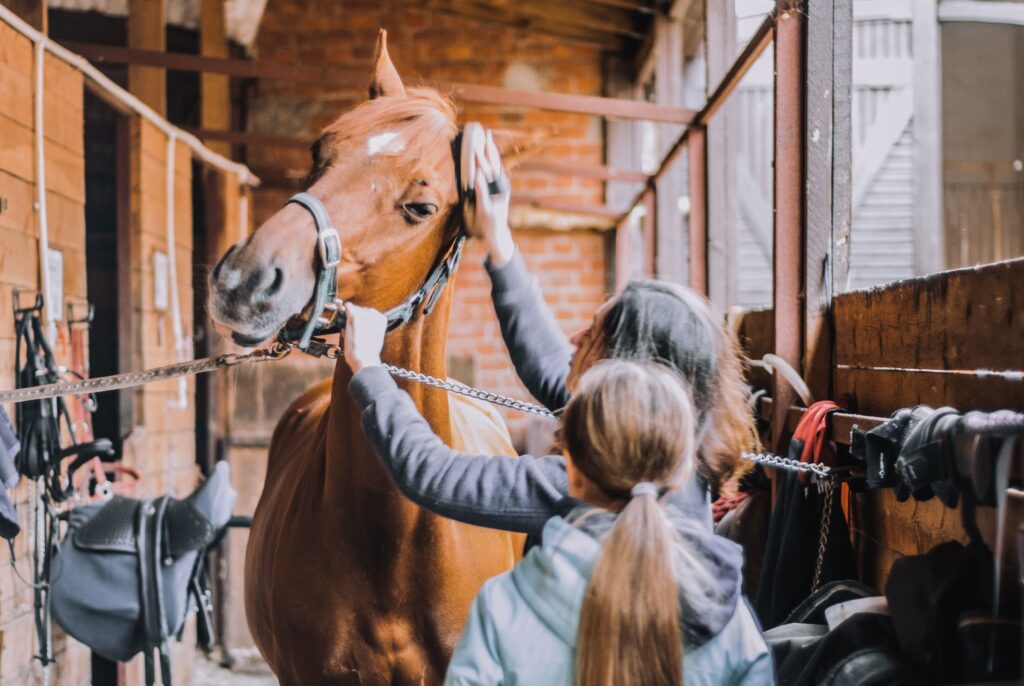
As someone who loves caring for horses, I know how frustrating it can be when our equine friends won’t stand still during grooming. It can be time-consuming, stressful, and even dangerous if they start to move around too much. So you probably want to know the answer to the question: how do I stop my horse from fidgeting during grooming?
The simple answer is to make sure your horse is comfortable and relaxed during grooming. This means being patient, gentle, and taking the time to desensitize them to grooming equipment. It’s also important to pay attention to your horse’s body language, as it can indicate discomfort or pain.
But here’s why you should keep reading: every horse is different, and there are a variety of reasons why they might fidget during grooming. In this article, I’ll cover some common causes of fidgeting and provide specific techniques and training exercises to help keep your horse calm and cooperative during grooming.
What’s the Root Cause of My Horse Fidgeting During Grooming?
Now that we’ve covered the basics of how to keep your horse calm and relaxed during grooming, let’s dive deeper into why they might be fidgeting in the first place. Some common reasons include pain, discomfort, boredom, or anxiety. It’s important to identify the root cause so you can address it properly.
Pain or Discomfort
If your horse is experiencing pain or discomfort, they may be fidgeting to try to alleviate the discomfort.
This is the first thing you want to rule out! Make sure your horse is not suffering from any underlying health issues or injuries, and check that your grooming equipment is not causing any discomfort or pain. Is there a certain spot on his or her body where your horse seems to be most sensitive? Is it in regard to a particular tool? Go slowly and gently, and give your horse a full body scan. You may also want to seek the opinion of your veterinarian.
Boredom
Boredom can also be a factor in fidgeting. Horses are intelligent and curious animals, and they can become restless if they’re not mentally stimulated. Try introducing new toys or treats to keep them engaged during grooming. Pay attention to body language, too. Boredom may look like pawing at the ground while tied. Does your horse seem ready to go?
Anxiety
Anxiety, on the other hand, might look like your horse is standing splayed, like they’re ready to spook. They may also be very tense and restless trying to move away from you as you reach toward them during grooming.
Horses are prey animals and can be easily spooked or anxious in new or stressful situations. Take the time to desensitize your horse to new grooming tools or situations gradually, and offer positive reinforcement to help build their confidence.
How Can I Desensitize My Horse So They Stand Still While I Use Grooming Tools?
One way to help prevent fidgeting during grooming is to desensitize your horse to the various tools and equipment used. This can help them feel more comfortable and relaxed during grooming, and reduce the likelihood of fidgeting.
First, consider your location. Is there something that would be easier on your horse? Do they prefer being tied to a post to crossties? In their stall to outdoors? Start where they feel comfortable so you only have to tackle one roadblock at a time.
To desensitize your horse to grooming tools, start by introducing them to the tool gradually. Let your horse smell and touch the tool. When they touch the tool, stop moving it toward them and move it away from them so they understand that engaging with what’s scary leads to less pressure.
Once your horse is comfortable with the tool, start using it on less sensitive areas of their body. Remember, horses are prey animals, so be careful with where you start. The shoulder is normally your safest option. Their belly protects their vital organs, so it can be an instinctively dangerous spot to them. Many horses also don’t like having their legs touched, so don’t start with those. Gradually work your way up to those more sensitive areas, such as their face or legs.
It’s important to go slowly and not rush the process. Every horse is different, and some may take longer to become comfortable with certain tools than others. Patience and consistency are key to successful desensitization.
Don’t get discouraged! Your horse will pick up on your frustration. It’s better to keep sessions short and end on a positive note.
By taking the time to desensitize your horse to grooming tools, you can help prevent fidgeting and create a more positive and stress-free grooming experience for both you and your horse.
